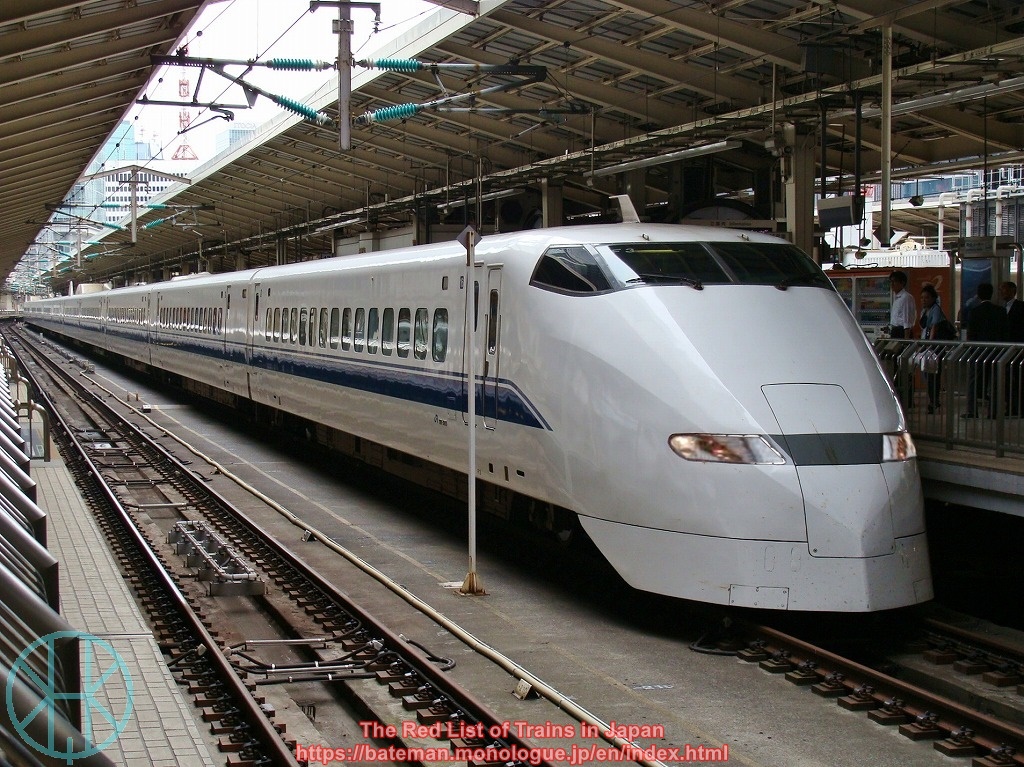300 series Bullet Train

Data (as of 3 Feb 2023)
| Status: | Extinct |
| Constructed in: | 1990-98 |
| Number built: | 1,120 |
| Retired in: | 2012 |
History
The 300 series was developed as the fastest bullet train at that time, which was formed of 16 coaches and capable of running at 270 km/h (168 mph), to win the competition against flights. Tokaido Shinkansen has been the most profitable and therefore the most important line for JR Central so that the company had to offer more convenient and faster services than airlines.
JR Central developed a prototype in 1990, and introduced to regular service two years later. The new trains were exclusively used on Nozomi, the fastest services, and made the journey time between Tokyo and Shin-Osaka 2 hours and 30 minutes, 19 minutes shorter than Hikari trains served by 100 series. The first Nozomi service of day left Tokyo at 6 am and arrived at Shin-Osaka at 8:30 am, meaning that businessmen in Tokyo could attend a meeting that started at 9 am in Osaka.
From 1993, JR West introduced the series on Sanyo Shinkansen by extending the Nozomi services to Hakata. The journey time between Tokyo and Hakata became 5 hours and 4 minutes, 43 minutes shorter than Grand Hikari services (100 series).
Nevertheless, the 300 series was not perfect. As the bodies were lighter than the predecessors to allow faster speed, the 300 series trains were infamous for noise and vibration. As 700 series trains were introduced, the 300 series were taken out of regular Nozomi services by 2001, and used for Hikari and Kodama services instead. All 300 series units were replaced with N700 series by 2012. As it happened, 300 series and its predecessor 100 series retired on the same day.
